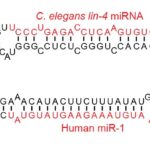
Oral squamous cell carcinoma (OSCC) is the most common type of oral cancer (Dental Elf – 29th Jun 2020) with the average survival rate 90% when detected early, however this drops to 50% with late detection (Dental Elf – 11th Nov 2020). The unspecific cancer symptoms and limited access to oral/dental healthcare are some of the reasons around 50% of OSCC patients are diagnosed at late stages (TNM III or IV) (Liu et al 2021). MicroRNAs are non-coding RNAs that regulate gene expression with some studies suggesting that they have the potential to be a non-invasive biomarker for cancer diagnosis.
The aim of this review was to compare and evaluate the diagnostic accuracy of blood and salivary microRNAs (miRNAs) in discriminating oral squamous cell carcinoma (OSCC).
Methods
The Preferred Reporting Items for Systematic Review and Meta-Analyses (PRISMA) were used to inform the methodology of this systematic review and meta-analysis. Studies which focused on the diagnostic value of body fluid miRNAs in OSCC and those which included patients with both OSCC and healthy controls were included. Quality assessment was undertaken using the Quality Assessment of Diagnostic Accuracy Studies (QUADAS-2) criteria.
Results
- 20 studies were included in this systematic review and meta-analysis comprising 1106 patients, 732 controls and 35 different miRNAs.
- A case control design was used in all studies. The included studies showed a overall low risk of bias (except in patient selection).
- Salivary miRNAs had a sensitivity of 0.70 (95% CI: 0.63-0.77) and a specificity of 0.82 (95% CI: 0.72-0.84). The AUC value (Area under the summary operator characteristic curve) was 0.80 (95% CI: 0.77-0.84).
- Blood miRNAs had a sensitivity of 0.79 (95% CI: 0.74-0.86), specificity of 0.82 (95% CI: 0.76-0.86) and the AUC value was 0.88 (95% CI: 0.85-0.90). There was no significant difference between salivary and blood miRNAs (p=0.67).
- Body fluid miRNAs showed a sensitivity of 0.78 (95% CI: 0.73-0.93) and specificity of 0.82 (95% CI: 0.77-0.86) and AUC value of 0.87 (95% CI: 0.84-0.90).
- Blood miRNAs had a correct diagnosis probability of 81% and a negative probability of 20%. These values were 81% and 21% for body fluid miRNAs suggesting a good diagnostic value of salivary, blood and body fluid miRNAs for OSCC detection.
- Deeks’ funnel plot determined that there was no significant publication bias.
Conclusions
The authors concluded:
…a moderate diagnostic accuracy of blood and salivary miRNAs presented for OSCC.
Comments
There was statistical significance in the specificity of salivary miRNAs between Asians and other participants however 15 of the 20 included articles were performed on Asians. There is limited research on miRNAs as a diagnostic biomarker for OSCC and the limitations of a non-representative sample were acknowledged by the authors. This study highlights a potential area for a large-scale study to provide more robust data to analyse the diagnostic utility of miRNAs for OSCC across the population.
References
Primary reference
Other references
Dental Elf – 29th June 2020
Elective neck dissection versus observation for T1-2 oral squamous cell carcinoma
Dental Elf – 11th November 2020
Salivary biomarkers CYFRA 21-1 and MMP-9 for oral squamous cell carcinoma diagnosis?
Picture Credits
By VTD – Own work, CC BY-SA 4.0.
